All issues

Volume 18 (2004)
- Issue 4 Pages 201-
- Issue 2 Pages 41-
- Issue 1 Pages 3-
Volume 18, Issue 2
Displaying 1-3 of 3 articles from this issue
- |<
- <
- 1
- >
- >|
-
Shigeo M. Tanaka, Hui B. Sun, Hiroki Yokota2004 Volume 18 Issue 2 Pages 41-44
Published: 2004
Released on J-STAGE: December 20, 2005
JOURNAL FREE ACCESSBecause of insufficient mechanical loading, exposure to weightlessness in space flight reduces bone mass. In order to maintain bone mass in a weightless condition, we investigated a novel form of mechanical loading - joint loading. Since some part of gravity-induced loading to our skeletal system is absorbed by viscoelastic deformation of joint tissues, we hypothesized that deformation of joint tissues would generate fluid flow in bone and stimulate bone formation in diaphyseal cortical bone. In order to test the hypothesis, we applied directly oscillatory loading to an elbow joint of mice and conducted bone histomorphometry on the diaphysis of ulnae. Using murine femurs ex vivo, streaming potentials were measured to evaluate a fluid flow induced by joint loading. Bone histomorphometry revealed that compared to no loading control, elbow loading increased mineralizing surface, mineral apposition rate, and bone formation rate 3.2-fold, 3.0-fold, and 7.9-fold, respectively. We demonstrated that joint loading generated a streaming potential in a medullar cavity of femurs. The results support a novel mechanism, in which joint loading stimulates effectively bone formation possibly by generating fluid flow, and suggest that a supportive attachment to joints, driven passively or actively, would be useful to maintain bone mass of astronauts during an exposure to weightlessness.View full abstractDownload PDF (645K) -
Masao Yamasaki, Tsuyoshi Shimizu, Masao Miyake, Yukako Miyamoto, Shin- ...2004 Volume 18 Issue 2 Pages 45-51
Published: 2004
Released on J-STAGE: December 20, 2005
JOURNAL FREE ACCESSThe effects of microgravity on the histological characteristics of the aortic depressor nerve, which is the afferent of the aortic baroreflex arc, were determined in 10 female adult rats. The rats were assigned for nursing neonates in the Space Shuttle Columbia or in the animal facility on the ground (NASA Neurolab, STS-90), and were housed for 16 days under microgravity in space (μg, n=5) or under one force of gravity on Earth (one-g, n=5). In the Schwann cell unit in which the axons of unmyelinated fibers are surrounded by one Schwann cell, the average number of axons per unit in the μg group was 2.1 ± 1.6 (mean ± SD, n=312) and significantly less than that in the one-g group (3.0 ± 2.9, n=397, p<0.05). The proportion of unmyelinated fibers in the aortic depressor nerve in the μg group was 64.5 ± 4.4% and significantly less than that in the one-g group(74.0 ± 7.3%, p<0.05). These results show that there is a decrease in the number of high-threshold unmyelinated fibers in the aortic depressor nerve in adult rats flown on the Shuttle Orbiter, suggesting that the aortic baroreflex is depressed under microgravity during space flight.View full abstractDownload PDF (888K) -
Masamichi Yamashita, Kaori Tomita-Yokotani, Teruko Nakamura2004 Volume 18 Issue 2 Pages 52-69
Published: 2004
Released on J-STAGE: December 20, 2005
JOURNAL FREE ACCESSMany flowers have coevolved with their pollinator animals. Gravity has been one of selection pressure for the evolution of flowers. Gravity rules morphology and other features of flowers in many aspects. Pair matching between the flower and its specific pollinator is one of factors that determine the fitness of both sides. Evolution of flower morphology and its molecular basis are reviewed briefly. Anemophilous flowers are also under the influence of gravity. Shape and other features of entomophilous flowers have been highly diversed. Gravitropic response and its mechanism are summarized. Recent findings on gravitropism and phototropism of pistils and stamens are presented in this article.View full abstractDownload PDF (5993K)
- |<
- <
- 1
- >
- >|